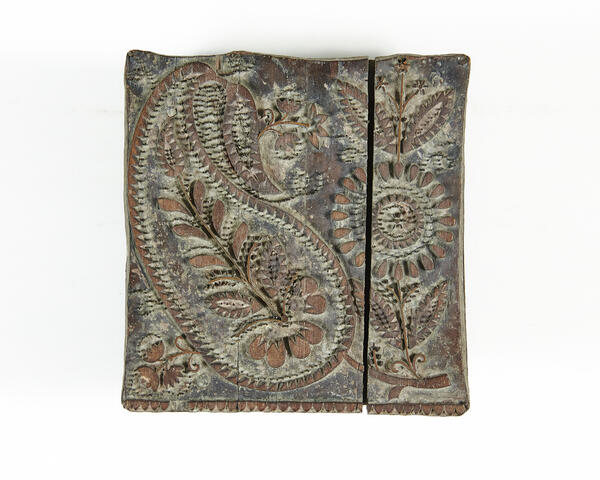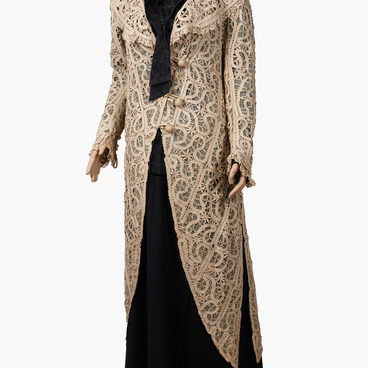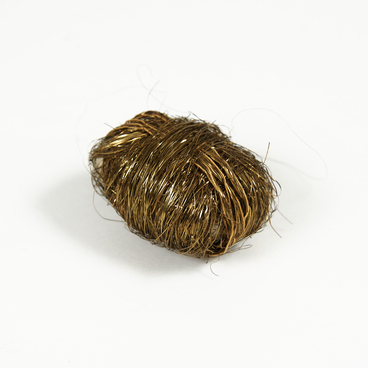The boards with relief ornamentation shown in the museum collection were created at the turn of the 20th century. They were used for producing a repeat pattern on textiles. The pattern was carved out and the print was applied to the fabric manually while using the board as a printing block. In Russia, this type of decorative fabrics appeared in the 10th century and the tradition was maintained until the mid-20th century.
These boards for applying a pattern were called as ‘printing blocks’ or ‘flowers’. They were usually made from a single piece of solid wood such as pear, walnut, birch, maple tree wood. The pattern could take a form of wooden board, beater or little hammer, also known as a mallet. That is why printing specialists were often called ‘hammerers’.
If the drawing was complex and multi-colored, the specialists used several printing blocks. Each printing block was covered with a separate color, which was not mixed with others. The same technological process was carried out with the pattern: only part of the pattern was carved on one printing block. When all colors were printed, the pattern became complete. To do this, the specialists pressed the printing blocks one by one to the fabric as many times as the number of colors. First, they printed the pattern outline, then the rest. Sometimes it took up to four hundred printing-blocks to print a complicated multi-colored pattern.
The initial print was made with the oil paints, followed by the ‘top’ (washable) paints and then the paints fixing the results. Sometimes gold and silver were used for printing. In this case gold or silver powder was applied to the adhesive surface. Black was the most common color, the black dye was obtained from soot or charcoal. The red dye was obtained from the dyer’s madder or scale insects. The blue dye from the oak bark was less common. These were the most popular dyes in Russia.
The most common material for printing was linen. However, this printing technique was also used to decorate wool and hemp fabric. Sometimes imported materials such as silk and paper were used, but few could afford them.
These boards for applying a pattern were called as ‘printing blocks’ or ‘flowers’. They were usually made from a single piece of solid wood such as pear, walnut, birch, maple tree wood. The pattern could take a form of wooden board, beater or little hammer, also known as a mallet. That is why printing specialists were often called ‘hammerers’.
If the drawing was complex and multi-colored, the specialists used several printing blocks. Each printing block was covered with a separate color, which was not mixed with others. The same technological process was carried out with the pattern: only part of the pattern was carved on one printing block. When all colors were printed, the pattern became complete. To do this, the specialists pressed the printing blocks one by one to the fabric as many times as the number of colors. First, they printed the pattern outline, then the rest. Sometimes it took up to four hundred printing-blocks to print a complicated multi-colored pattern.
The initial print was made with the oil paints, followed by the ‘top’ (washable) paints and then the paints fixing the results. Sometimes gold and silver were used for printing. In this case gold or silver powder was applied to the adhesive surface. Black was the most common color, the black dye was obtained from soot or charcoal. The red dye was obtained from the dyer’s madder or scale insects. The blue dye from the oak bark was less common. These were the most popular dyes in Russia.
The most common material for printing was linen. However, this printing technique was also used to decorate wool and hemp fabric. Sometimes imported materials such as silk and paper were used, but few could afford them.



